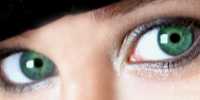Author Interviews, JAMA, Ophthalmology / 09.11.2018
Which Questionnaires Best Reflect Dry Eye Symptoms?
MedicalResearch.com Interview with:
 Jennifer P. Craig, Associate Professor
Department of Ophthalmology
New Zealand National Eye Centre
Auckland, New Zealand
MedicalResearch.com: What is the background for this study?
Response: Dry eye disease is a complex multi-factorial condition, which affects between 5% to 50% of the adult population in different parts of the world. The condition can have profound effects on the ocular comfort, visual function, and quality of life of sufferers. In both clinical practice and academic research settings, validated questionnaires are frequently used to screen for dry eye symptomology, before clinical assessment of tear film homeostatic markers is conducted to make an overall diagnosis of dry eye disease.
Although a large number of validated symptomology questionnaires has previously been developed, the recently convened Tear Film and Ocular Surface Dry Eye Workshop II (TFOS DEWS II) identified that the considerable heterogeneities in the study populations, methodologies, and reference standards used in earlier diagnostic accuracy studies introduced significant challenges when trying to compare the diagnostic performance of these screening instruments.
The current study is the first to offer a direct comparison of five commonly used validated questionnaires within the same study population, and uses the global consensus criteria for tear film homeostatic disturbance developed by the TFOS DEWS II as the reference standard.
(more…)
Jennifer P. Craig, Associate Professor
Department of Ophthalmology
New Zealand National Eye Centre
Auckland, New Zealand
MedicalResearch.com: What is the background for this study?
Response: Dry eye disease is a complex multi-factorial condition, which affects between 5% to 50% of the adult population in different parts of the world. The condition can have profound effects on the ocular comfort, visual function, and quality of life of sufferers. In both clinical practice and academic research settings, validated questionnaires are frequently used to screen for dry eye symptomology, before clinical assessment of tear film homeostatic markers is conducted to make an overall diagnosis of dry eye disease.
Although a large number of validated symptomology questionnaires has previously been developed, the recently convened Tear Film and Ocular Surface Dry Eye Workshop II (TFOS DEWS II) identified that the considerable heterogeneities in the study populations, methodologies, and reference standards used in earlier diagnostic accuracy studies introduced significant challenges when trying to compare the diagnostic performance of these screening instruments.
The current study is the first to offer a direct comparison of five commonly used validated questionnaires within the same study population, and uses the global consensus criteria for tear film homeostatic disturbance developed by the TFOS DEWS II as the reference standard.
(more…)
 Jennifer P. Craig, Associate Professor
Department of Ophthalmology
New Zealand National Eye Centre
Auckland, New Zealand
MedicalResearch.com: What is the background for this study?
Response: Dry eye disease is a complex multi-factorial condition, which affects between 5% to 50% of the adult population in different parts of the world. The condition can have profound effects on the ocular comfort, visual function, and quality of life of sufferers. In both clinical practice and academic research settings, validated questionnaires are frequently used to screen for dry eye symptomology, before clinical assessment of tear film homeostatic markers is conducted to make an overall diagnosis of dry eye disease.
Although a large number of validated symptomology questionnaires has previously been developed, the recently convened Tear Film and Ocular Surface Dry Eye Workshop II (TFOS DEWS II) identified that the considerable heterogeneities in the study populations, methodologies, and reference standards used in earlier diagnostic accuracy studies introduced significant challenges when trying to compare the diagnostic performance of these screening instruments.
The current study is the first to offer a direct comparison of five commonly used validated questionnaires within the same study population, and uses the global consensus criteria for tear film homeostatic disturbance developed by the TFOS DEWS II as the reference standard.
(more…)
Jennifer P. Craig, Associate Professor
Department of Ophthalmology
New Zealand National Eye Centre
Auckland, New Zealand
MedicalResearch.com: What is the background for this study?
Response: Dry eye disease is a complex multi-factorial condition, which affects between 5% to 50% of the adult population in different parts of the world. The condition can have profound effects on the ocular comfort, visual function, and quality of life of sufferers. In both clinical practice and academic research settings, validated questionnaires are frequently used to screen for dry eye symptomology, before clinical assessment of tear film homeostatic markers is conducted to make an overall diagnosis of dry eye disease.
Although a large number of validated symptomology questionnaires has previously been developed, the recently convened Tear Film and Ocular Surface Dry Eye Workshop II (TFOS DEWS II) identified that the considerable heterogeneities in the study populations, methodologies, and reference standards used in earlier diagnostic accuracy studies introduced significant challenges when trying to compare the diagnostic performance of these screening instruments.
The current study is the first to offer a direct comparison of five commonly used validated questionnaires within the same study population, and uses the global consensus criteria for tear film homeostatic disturbance developed by the TFOS DEWS II as the reference standard.
(more…)
